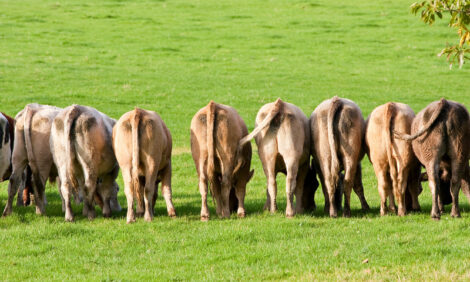



Weekly Outlook: Where is the Bottom?
US - Corn and soybean prices have been pummeled by negative fundamental news since early September. In late June, we were asking if the highs were near, now the question is whether the lows are near.|
Extension Economist Purdue University |
The latest round of negative information was provided by the USDA’s October Crop Production report. For soybeans, that report contained a 2008 production forecast of 2.983 billion bushels, 49 million larger than the September forecast and 63 million larger than the average pre-report guess. In spite of a 3 bushel increase in the forecast of the Illinois average yield, the forecast of the U.S. average yield, at 39.5 bushels, was 0.5 bushels below the September forecast. That forecast is 2.2 bushels below the 2007 average and would be the lowest average yield in 5 years. The larger crop forecast was the result of a larger acreage estimate. At 76.983 million, planted acreage is 2.2 million above the previous estimate. The harvested acreage forecast of 75.479 is 2.138 million above the September forecast.
In the USDA’s revised supply and demand projections, the larger crop forecast was partially offset with a 36 million bushel increase in projected use during the current marketing year. Year ending stocks are now projected at 220 million bushels. Based on current projections, an increase in U.S. soybean acreage will not be required in 2009. If the 2009 yield is near 42.5 bushels, harvested acreage at this year’s level would result in a crop of 3.208 billion bushels. If year ending stocks can be reduced to about 125 million bushels, then 3.31 billion bushels would be available for consumption during the 2009-10 marketing year. That would be 335 million above projected use for the current year and 237 million above the record consumption of 2006-07. If the 2009 South American crop lives up to current expectations, world supplies would likely be sufficient with a 2 to 3 million acre reduction in U.S. acreage in 2009.
For corn, the 2008 U.S. crop is now projected at 12.2 billion bushels, 128 million bushels larger than the September forecast. Planted acreage of corn is now estimated at 86.909, 68,000 less than the previous estimate, while area harvested for grain is estimated at 79,197 million acres, 93,000 below the September forecast. The U.S. average yield is forecast at 154 bushels, 1.7 bushels above the September forecast, reflecting higher yield prospects in the major producing states of Illinois, Iowa, Kansas, Minnesota, and Nebraska. Yield prospects declined in Indiana, Ohio, and South Dakota.
On the consumption side of the equation, the USDA increased projected use during the current marketing year by 40 million bushels. The projection of feed use was increased by 150 million bushels and the forecast of processing uses of corn was reduced by 110 million. Most of that reduction, 100 million bushels, was in the ethanol category. Year ending stocks are projected at 1.154 billion bushels, 136 million above the September forecast. The projected level of year ending stocks is relatively small and would force a reduction in use during the 2009-10 marketing year unless production is increased in 2009. With a 2009 yield near trend value of about 153 bushels, it appears that corn acreage needs to expand by 3 to 4 million acres in 2009. Most of that can come from a reduction in soybean acreage. In addition, reduced acreage of soft red winter wheat may free some acreage for corn planting in 2009. The major implication, then, of the October corn and soybean production forecasts is that there may not need to be much of an acreage battle in 2009. However, corn prices will have to be high enough in relation to soybean prices to motivate a modest acreage shift.
In addition to larger production forecasts, corn and soybean prices have continued to be pressured by declining stock prices and energy prices that threaten demand prospects. With the supply side of the equation becoming more settled, price direction will now come primarily from the demand side, where there are some positive developments. Export sales for the week ended October 2 were relatively large and well above the weekly pace needed to reach the USDA projections for the year. Feed prices are now low enough that livestock feeding margins are generally profitable, ethanol production margins exceed operating costs, and low prices will not encourage a large supply response in the southern hemisphere. It appears that value now exceeds the price of corn and soybeans. For those prices to stabilize and/or rebound, confidence in the financial markets will have to be demonstrated.


